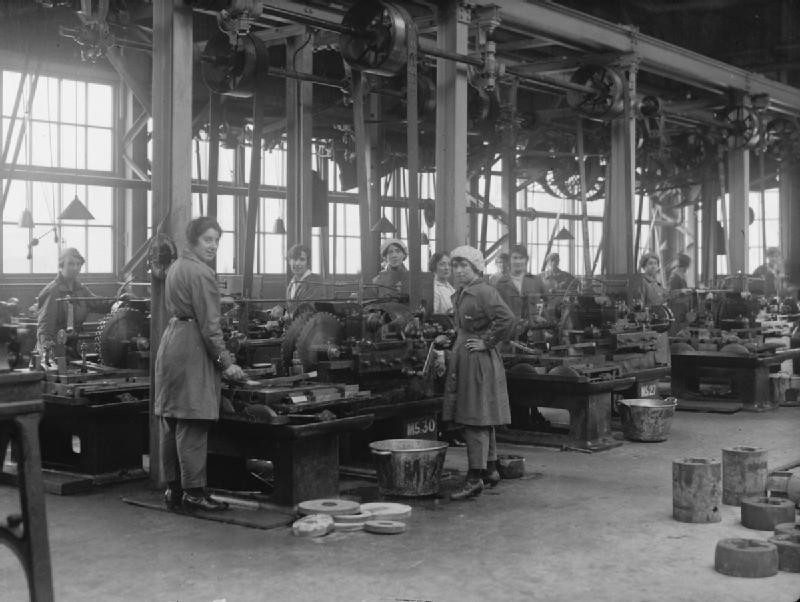Clean, high-tech: this is the factory of the future
Factories have long held a place in the popular imagination, not just as sources of employment and community prosperity, but also as hectic, noisy, grimy and polluting facilities, where thousands of people are employed in largely low-skilled line positions.
Today’s factories are changing. Breathtaking advances in technology, automation and globalisation are transforming how and where manufacturers plan, construct, operate and integrate their factory networks. They are also ushering in significant operational, political and societal changes.
From America’s Rust Belt to rural India and China, a chorus of voices is struggling to understand: how are technologies changing how we produce and distribute products? Are automation and free trade taking away valuable factory jobs? What type of skills will be required?
How can communities prosper in the face of new production technologies?
How and when should manufacturers upgrade their legacy equipment to embrace new technologies to boost yields and efficiency for advantage or simply to remain competitive?
Businesses, governments and society alike must understand the technological dynamics at play and collaborate together to ensure tomorrow’s factory towns prosper.
What will the factory of the future look like?
The key answers will come from the factory floor where new technologies like 3D printing, advanced robotics, the Internet of Things, artificial intelligence, wearable devices, and virtual and augmented reality are converging to create new value, enabling the hyper-efficient and flexible factory of the future.
The value created is real: large global producers have increased efficiency and reduced costs by up to 30% across all operations, driven by improvements in overall operating efficiency, lower inventory, energy and water costs, and reduction in incidents involving safety.
While the pace of change and how these changes will propagate across networks will differ by industry and country, the factory of the future is a more digital, virtual and resource-efficient space.
It is an environment that is more connected, both in terms of information availability and machines speaking to and directing each other. It is a place where automation, simulation, visualisation and analytics are deployed more widely to eliminate waste and increase efficiency, in terms of material yields, energy consumption, effort and time.
In particular, factories of the future have three common overarching characteristics:
Digital shop floor processes that are connected, automated and flexible
The Internet of Things and connectivity combined with analytics and artificial intelligence will improve asset efficiency, decrease downtime and unplanned maintenance, and allow manufacturers to uncover new sources of value in services.
By employing digital twins, simulations and virtual reality, designers and operators will be virtually immersed in interactive media to optimise design, production processes and material flows.
Printing in 3D offers vast potential for new product designs and functional capabilities, as well as allowing for more customisation.
New relationships between operators and machines
Technologies are changing the nature of work and skills required from operators. Robotics are automating most of the “dull, dirty, and dangerous” tasks, and increasingly collaborative robots are moving out of the cage to work side by side with operators.
Augmented reality and wearables are also changing how operators train, assemble and make decisions on the shop floor, increasing flexibility, productivity, and quality.
Labour will actually remain cost-effective in many arenas, as technology allows workers to significantly improve their productivity even as overall numbers decline. Some human-cyber combination will likely remain the dominant cog in factories for several years to come, certainly well into the coming decade.
In both developed markets, where populations are aging out of the workforce, and lower-cost markets, where workers will need increasingly better skills, technology will be a valuable step toward quickly unlocking productivity gains and enabling untapped labour pools.
The structure, location and scale of factories
The factory of the future is hyper-efficient and sustainable, increasingly modularized with interchangeable lines that can be easily reconfigured for multiple production batches. Digital production technologies will allow software developers, product designers and production technicians to work in open, airy environments.
As technology diminishes the role of low-cost labour and lowers the threshold of economies of scale, distributed manufacturing will become the norm. Producers will be able to augment their traditional production footprints with smaller and more flexible units located next to points of consumption, allowing them to meet local requirements with a more responsive supply chain.
These more localised, more energy-efficient, lower-waste factories will contribute to advances in the circular economy.
While these general trends seem likely, the factory of the future will not follow a single paradigm. Change will come more quickly in some places or look different in others as industry sectors and developing vs. developed economies seek their own path.
In the meantime, producers need to reconsider their capital investment strategies in light of rapidly changing capabilities that will make historical investment horizons obsolete. Some are already there; others cannot afford to stay behind for too long.
If communities are to prosper as technology redirects the flow of jobs, eliminating scale-oriented, low-cost, labour-based jobs, distributing higher-skill-based jobs to regional market centres, then they must bring forward the required skills and infrastructure.
This is where policymakers must take the lead – in partnership with business, academia and societal organisations – in preparing their communities.
Whereas previous industrial revolutions evolved over the course of multiple generations, the pace of the Fourth Industrial Revolution requires a more rapid response if communities do not want to be passed by.



